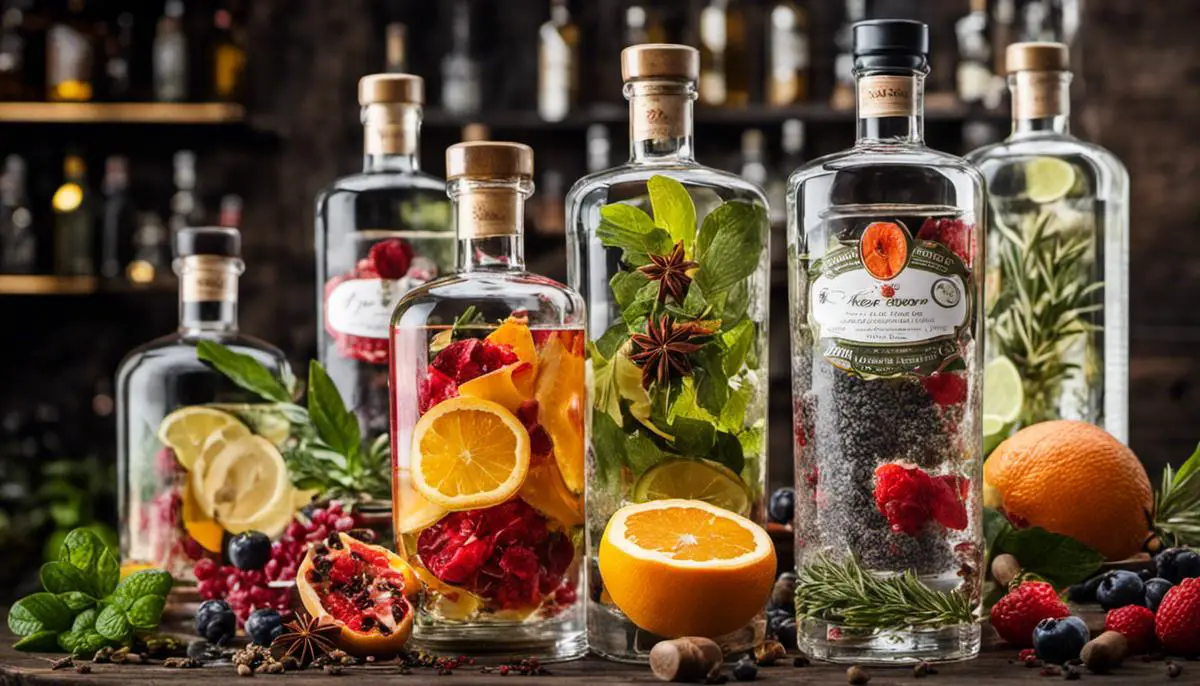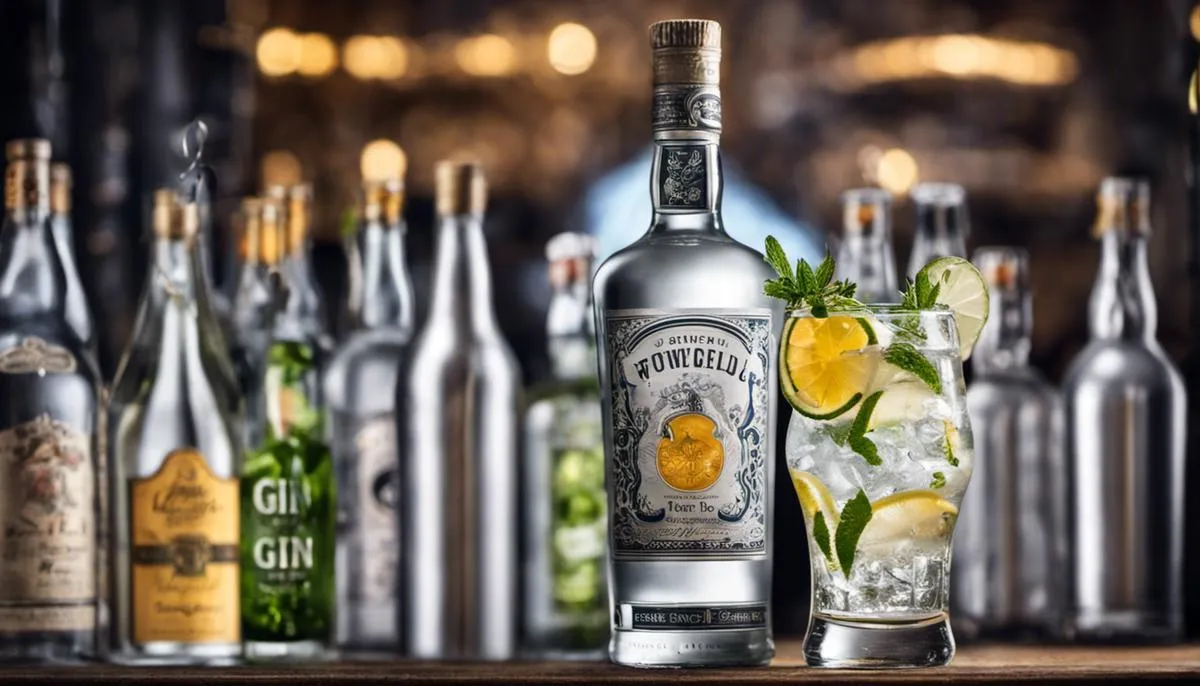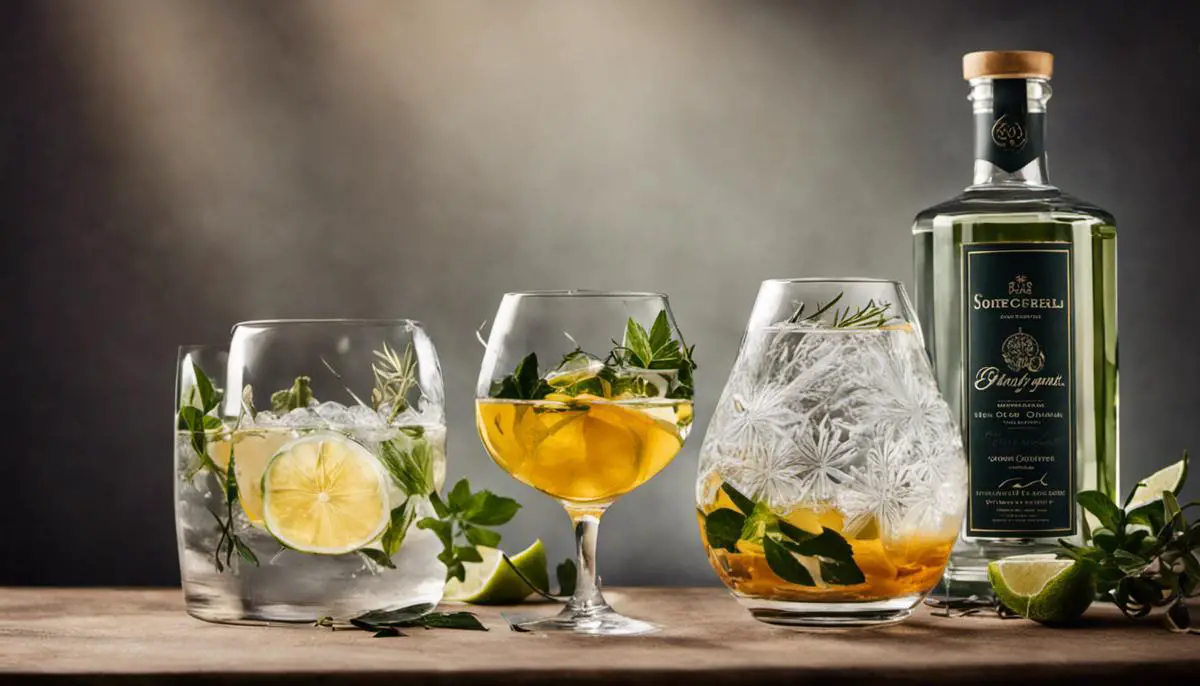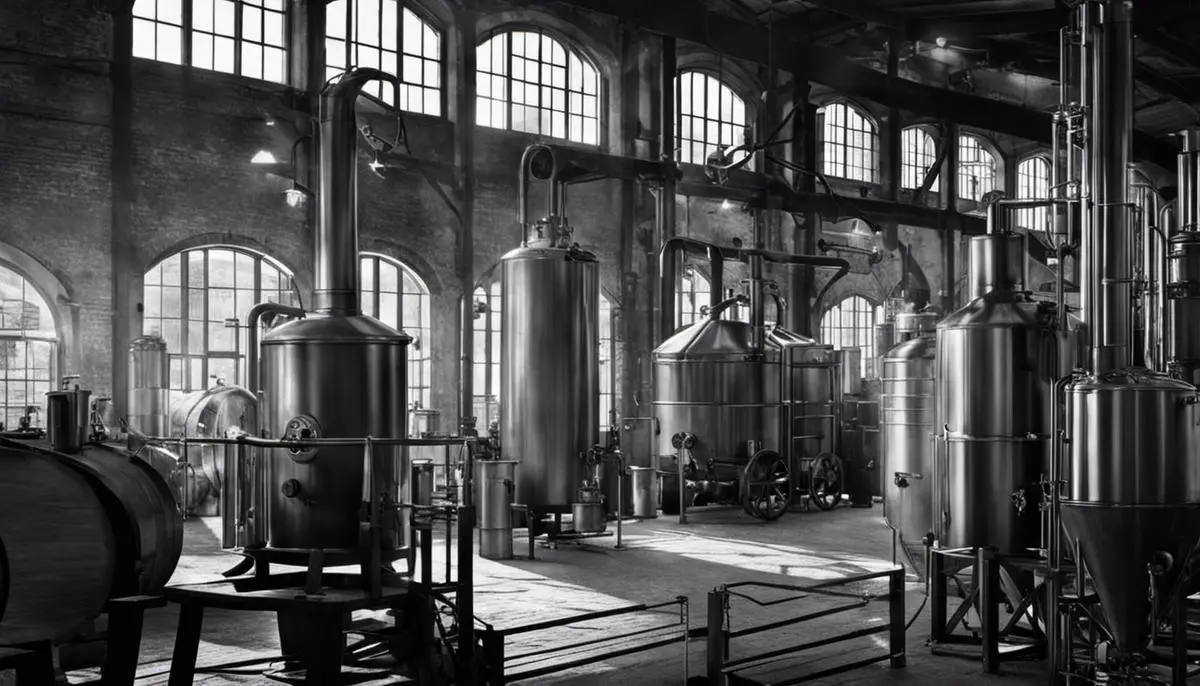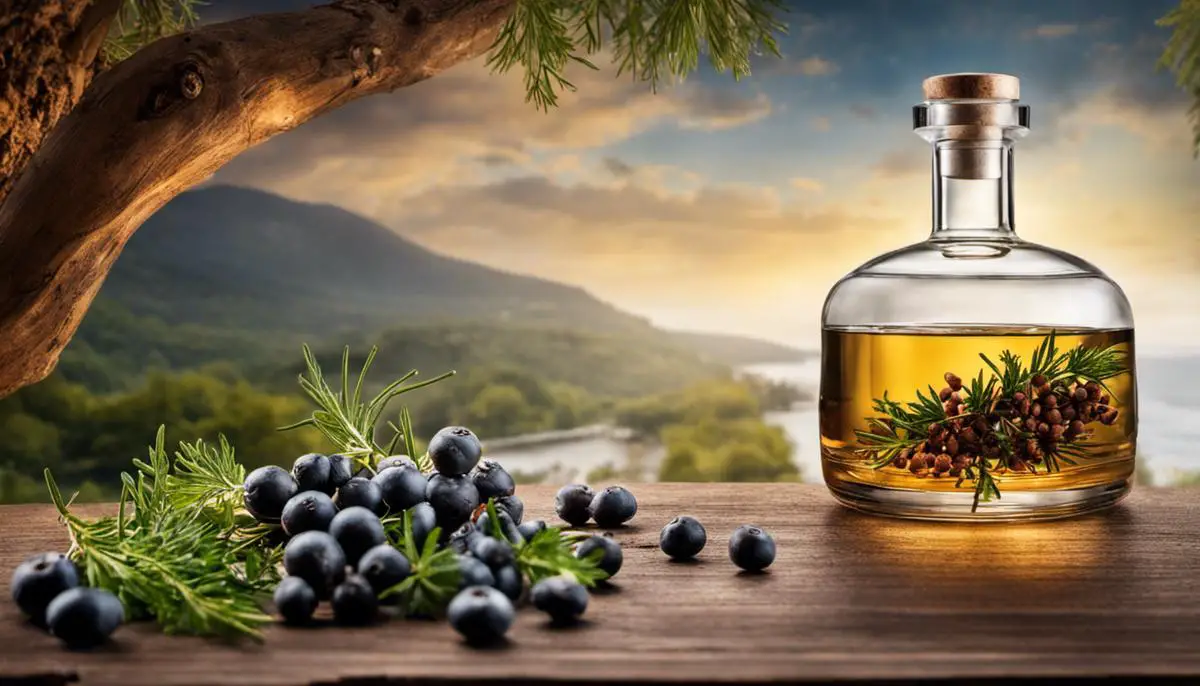Gin, a distilled alcohol known for its rich history and variety of flavors, has long stood as a beloved beverage of choice for many. The enchanting world of gin, with its intriguing blend of botanicals, herbs, and spices, can be a rich journey of discovery for both the novice and the connoisseur. This exploration delves deep into the history of gin, its production methods, and the wide array of gin types available in the market. By also teaching about the different botanicals, fruits and spices used for infusing gin, it aims to enhance your knowledge of gin’s unique flavor profiles. This journey is not just about learning but also experimenting, as you will be guided through the meticulous process of gin infusion, allowing you to create your bespoke gin infusion.
Understanding Gin
The Origins of Gin
From the juniper-laced alcohol of ancient civilizations to the ubiquitous spirit in today’s cocktails, gin has a long and storied history. Its origins trace back to the Middle Ages with a juniper berry infused alcoholic drink used for medicinal purposes. It wasn’t until the 17th century in the Netherlands, when it was known as Jenever, did gin start to resemble the spirit we know today. British soldiers fighting in the Dutch War of Independence brought the spirit back to England, where it quickly spread and evolved into the modern gin.
Defining Gin and Its Production
Gin is a spirit whose primary flavor comes from juniper berries. It is made through the process of distillation, where the botanicals, including juniper, are added to a neutral grain alcohol. The botanical mixture is then boiled, causing the release of their essential oils and essences. These vapors are collected, condensed, and finally diluted into gin. Some gin makers prefer distilling their gin with the botanicals, while others add the botanical essences afterwards. This choice has a significant impact on the resulting flavor of the gin.
Different Types of Gin
Several types of gin grace our shelves today, each with its distinct method of production and resulting flavor profile. London Dry Gin, the most commonly known version, is a high-quality, juniper-heavy type made through distillation with all botanicals. Plymouth Gin is a sweet, aromatic type made in Plymouth, England. Another popular type is Old Tom Gin, known for its slightly sweet flavor. The Dutch still make their gin, known as Genever, which is malted like whiskey and carries a rich, heavy flavor compared to the light crispness of its British counterparts.
The Botanicals in Gin
Juniper berries form the cornerstone of any gin but a plethora of other botanicals are also used to create unique and complex flavors that lurk in every sip. Common botanicals include coriander seeds, angelica root, citrus peels, orris root, and more. Each distiller has their own confidential recipe of botanicals that create their gin’s distinctive flavor.
Understanding Gin Flavors
Investing some time in tasting different types of gin will help you understand the spectrum of flavors within this diverse spirit category. Try tasting juniper-heavy London Dry, sweeter Old Tom, and malty Genever side-by-side to truly appreciate the differences. Remember, the base flavor of your gin will greatly impact the final flavor of your infusion.
Creating Your Own Gin Infusions
Once you’re familiar with gin’s properties and flavors, you can experiment with creating your own gin infusions to develop your unique concoctions. Choose your botanicals wisely, considering how they will interact with your chosen gin’s flavor profile. The process typically involves steeping your chosen botanicals in gin for a period of time before straining and serving. As your knowledge and experience grow, mix and match different botanicals to create a gin infusion that is truly your own creation.

Ingredients Selection
Understanding the Ingredients for Gin Infusions
The art of gin infusion revolves around understanding which fruits, herbs, botanicals, and spices pair best with gin’s unique flavor profile. A classic dry gin provides a neutral base with distinct notes of juniper berries, coriander, angelica root, and citrus peels, making it a versatile spirit for infusions.
Fruits like apples, pears, and citrus fruits like lemons, oranges or grapefruits can complement gin’s subtle sweetness and acidity. Infusions from stone fruits such as peaches and plums, as well as berries like strawberries and raspberries, add a touch of tartness and depth to the gin’s flavor profile.
Herbs and Botanicals Infusions
Herbs can provide captivating complexity to gin infusions. The scent and flavor of fresh herbs like rosemary, basil, sage or even mint interact intriguingly with gin’s herbaceous notes. Botanicals such as cucumber, rose petals, and lavender can help to cultivate a mild, floral undertone.
Infusing Gin with Spices
Spices are excellent in lending warmth and a bit of kick to your gin infusions. Popular choices include cardamom, star anise, cinnamon, and peppercorns. They add a robust, aromatic, and spicy flavor profile that helps to offset the gin’s dryness and provide a distinctive finish.
Mastering the Technique of Infusion
Making your own gin infusion begins with selecting a high-quality dry gin and your choice of ingredients. A good rule of thumb for proportions is to use about one cup of your chosen ingredient per one liter of gin. For example, if you’re making a raspberry gin, you’ll need one cup of fresh raspberries for each liter of gin.
For the infusion process, add your ingredients to a clean, air-tight container. Pour your gin over the ingredients, making sure they are completely submerged. Seal the container and let it rest in a cool, dark place for about 1-2 weeks. Remember to shake the container gently every few days to help circulate the flavors.
Once the desired flavor is achieved, strain the infusion through a cheesecloth or fine mesh strainer into a clean bottle. Before serving, it’s often best to allow the spirit to rest for a few days to let the flavors meld together further.
Remember the beauty of these infusions is that they are fully customizable.
Feel free to experiment with different flavors and ingredients to create something uniquely your own. Making gin infusions can truly be an exciting and rewarding culinary venture.

Gin Infusion Process
Gin Infusion Basics
For any infusion, you’ll require a high-quality base spirit like gin, fresh ingredients like fruits, herbs or spices, a clean glass jar with a tight-fitting lid, and a fine-mesh strainer. Begin by thoroughly washing and drying your chosen ingredients, and then roughly chop or crush them to expose more flavors.
Preparation for Infusion
Next, add the prepared ingredients to your glass jar. Aim for a mix that balances well with the gin: around 1 to 2 cups of fruit, or 1 to 2 tablespoons of spices or herbs, for every 2 cups of gin. Once your elements are in place, pour the gin over them, making sure they are fully submerged. Close the lid tightly and give the jar a gentle shake to mix everything together.
Infusion Time
The key element in a successful infusion lies in the patient wait. Store the jar in a cool, dark place, away from direct sunlight, and allow your concoction to infuse for at least one week. This period might differ based on your ingredients; fruits and cucumbers may require less time, while hard spices and roots could benefit from a couple of weeks.
Observing the Process
It’s essential to keep an eye on your infusion over time. Periodically taste a small sample to assess the progress. As the days go by, the flavors will deepen and intensify. Make notes of how the infusion changes over days or weeks; this will help you decide on the optimal infusion time for your personal taste.
Straining the Gin
Once your infusion reaches the desired intensity, it’s time to separate the gin from the ingredients. Pour the mixture through a fine-mesh strainer into a clean bowl or jar. If you notice any remaining solids or cloudiness, you might need to strain the gin a second time through a coffee filter for clarity.
Storage and Usage
Store the strained gin infusion in a clean, airtight glass bottle or jar. It can be stored in a cool, dark place and typically lasts several months. Your infused gin can be enjoyed neat, on the rocks, or added to cocktails according to personal preference.
Experimenting with Flavors
Different combinations of fruits, herbs, and spices can lead to unique and customized gin infusions. Experiment with both single-ingredient infusions and complex flavor profiles. Try mixing fruits like blueberries or peaches with herbs like rosemary or mint. Spices such as cinnamon or vanilla can add a warm profile to your gin. This is your chance to get creative and find your perfect gin infusion.
Remember, making gin infusions is as much of an art as it is a science. Practice, patient testing, and note-taking will help refine your methods and perfect your results.
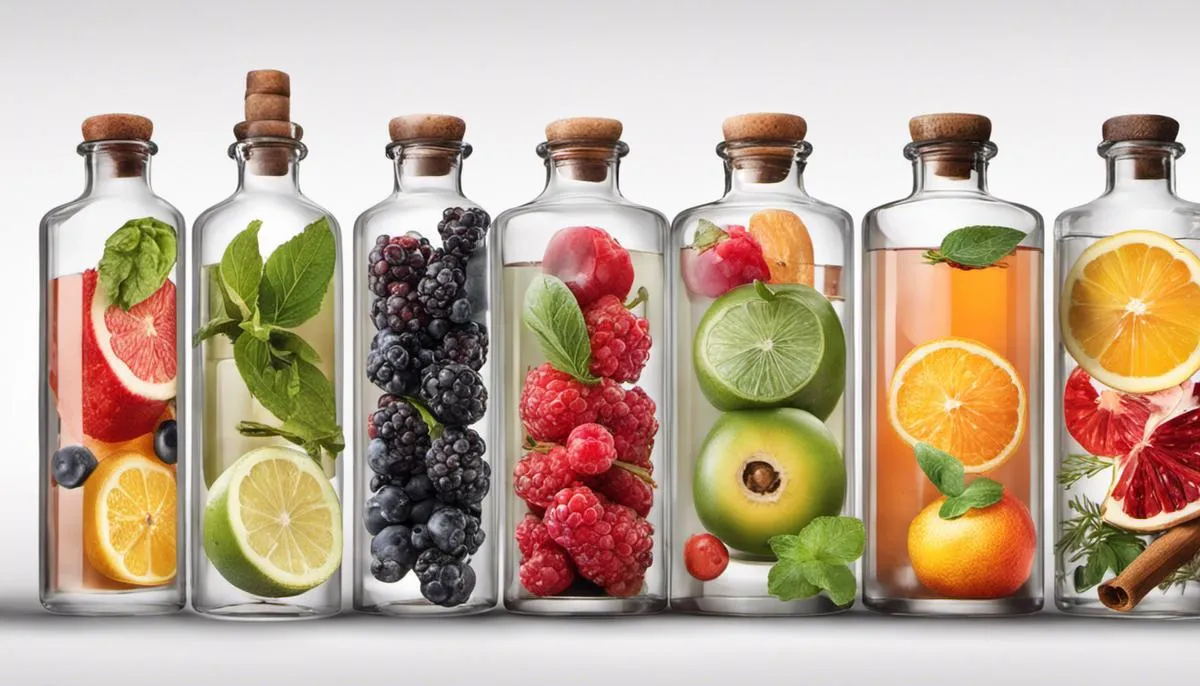
The power to transform a simple bottle of gin into a custom-flavored delight lies in your hands. Selecting the right ingredients and understanding their interaction with gin is an art that needs to be honed over time. Through consistent practice and experimentation, you can master the combination of flavors, the impact of infusion times on taste evolution, and the right storage practices. Whether you stand at the threshold of the gin-infusing world or are a seasoned enthusiast, continuous learning and exploration can render you an expert in crafting a gin infusion of your unique preference and style. Enjoy this adventure to its fullest, knowing that each step brings you closer to creating a liquid masterpiece that enthralls the senses.

